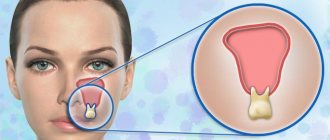Galvanosis
The oral cavity is a complex biological environment, in the soft tissue structures and mucous membranes of which a large number of electrochemical reactions occur under the influence of saliva. One of them is the occurrence of galvanic microcurrents - weak impulses of electricity. They are formed when salivary fluid comes into contact with metal orthopedic devices in the mouth. This process is the norm, however, with an increase in the strength of the impulses, pathologies can form, primarily galvanosis. Previously, this was called intolerance to metal alloys and their inclusions in the oral cavity.
Specialists from the branches of family dentistry West Dental in Vsevolozhsk microdistrict Yuzhny and Yanino-1 will first of all take a detailed allergy history at a consultation appointment and help you choose orthopedic and surgical structures for your convenience. Dentists, orthopedists-surgeons-implantologists Epimakhov Konstantin Vasilyevich and Berkovich Sergey Andreevich will make the installation and selection of the necessary structures comfortable and most suitable for you.
Definition of pathology
Galvanosis (ICD code K13.7) is a pathology in dental practice that occurs due to the strong influence of metal currents on the soft tissue structures of the oral cavity. Such currents are formed when metal structures of different potentials come into contact with each other and with salivary fluid.
Characteristic signs of the occurrence of galvanism are:
- metallic taste in the mouth;
- dry mucous membranes;
- decreased taste sensitivity;
- burning of the papillae of the tongue;
- frequent migraines;
- increased irritability.
The first symptoms become noticeable within a couple of months after the installation of prostheses containing steel, clasps made of chromium-cobalt, and replacement of the old bridge-like console with a new one made of a gold alloy.
Cost of pathology treatment
How much it costs to cure galvanosis will depend on the amount of work. For example, the cost of tests starts from 2000 rubles, ceramic or metal-free crowns - from 12 thousand, acrylic dentures - from 25 thousand, and a high-quality implant with a crown can be installed for 35 thousand rubles.
User Questions
QUESTION: Hello, I would like to ask you if a new metal-ceramic crown can cause a feeling of electric discharge in the mouth? I finished prosthetics a week ago, and now something strange has started to happen. Irina
ANSWER: If you already have metal dentures (except for a new crown), then your symptoms may well be signs of galvanosis. Moreover, it can even be provoked by a zinc metal pin in the root canal, left after treatment of pulpitis. Therefore, it is better to immediately contact your orthopedic dentist and undergo an examination, since galvanic syndrome will not go away on its own. We need to find the cause and eliminate it.
- Wulfes H. Modern prosthetic technologies, 2002.
Author: Chernov A. R. (Thank you for your help in writing the article and the information provided)
Causes
Modern orthopedic specialists identify a number of fundamental reasons for the formation of galvanosis after prosthetics with devices containing metals. It is very important to understand the causes of galvanosis in order to correctly perform a differential diagnosis in the clinic and draw up the necessary treatment plan.
- Galvanic cell. Reasons for its formation:
- difference in potentials of the metals that make up the alloy of the prosthesis;
- different composition and structure of metal combinations;
- non-compliance with the rules for casting material;
- low-quality alloy;
- error in assigning dissimilar metals.
- Toxic effects of heavy metals.
- Individual patient health characteristics and concomitant diseases:
- intolerance to alloy components of the prosthetic structure;
- characteristics of salivary fluid;
- chronic lesions - caries, periodontitis;
- pathologies of the gastrointestinal tract;
- poor quality oral hygiene.
Causes of galvanic syndrome
The main reason for galvanism in the mouth (and not only) is the interaction of metals with different potentials. Today, about 20 metals and their alloys are used in dentistry - these are nickel, cobalt, chromium, iron, copper, zinc, titanium, gold, platinum, mercury and others. And it is not always possible to carry out prosthetics using the same metal that is already in the patient’s mouth. For example, in a situation where the previous prosthetics1 was a long time ago and now the person no longer remembers what exactly the prosthesis is made of, and the doctor cannot determine “by eye” all the components of the alloy.
An active galvanic process can occur in the following situations:
- crowns, inlays or fillings based on metals are installed in the mouth and these metals are different: for example, a reaction will not occur between gold and gold, but galvanism is quite possible between an amalgam filling and a steel crown. It is also not necessary that the dentures be made only of metal; galvanism can occur on metal-ceramics (crowns), which are based on different metals,
- there are scratches or corrosion on metal prostheses,
- dentures are manufactured or repaired by soldering,
- For prosthetics and implantation, low-quality raw materials with undesirable impurities are used: of course, the blame here falls on unscrupulous suppliers. Therefore, the clinic should take a responsible approach to the choice of materials,
- wearing orthodontic devices made of various metals: these can be braces or plates. Galvanism can also occur between a splinting retainer (worn after braces) and a metal crown in the mouth,
- if the patient has allergic reactions, immunity is reduced.
Only until 15.01 South Korean implant Osstem - from 18,500 rubles.
Hurry up to sign up for a free consultation and lock in promotional prices.
Call now or request a call
Opening hours: 24 hours a day - seven days a week
An increase in galvanic syndrome can occur when the properties of saliva change (when its acidity increases) due to stomatitis, periodontitis or general diseases, or if a person regularly consumes acidic foods.
Symptoms of the disease
The diagnosis of galvanosis a couple of months after the installation of prostheses begins to manifest itself with pronounced symptoms:
- persistent metallic taste;
- deterioration of taste sensitivity;
- increased sensations of acidity;
- burning tongue;
- soreness of the cheek mucosa;
- impaired salivation;
- migraine;
- irritability;
- insomnia;
- general weakness.
Symptoms appear in the morning and are often accompanied by disease of the oral mucosa:
- hyperkeratosis—keratinization of the mucous membrane;
- erosions and ulcers - thinning of the soft tissue structures of the oral cavity.
Classification and stages of development of galvanosis
Modern classification distinguishes 2 forms:
- Atypical. With this form, the conductivity of the salivary fluid, the current strength, and the number of active potential particles increase 4 times more than normal. The atypical form is a difficult pathology to diagnose. With prolonged neglect and failure to carry out timely treatment, growth of tumor-like formations, inflammation of the mucous membrane, and ulceration are possible.
- Typical. The potential increases over 4 times, accompanied by local and general symptoms. Often this form of pathology occurs in patients with destroyed and defective structures. Consequences: allergies to metals, malignancy of tumors and inflammation in soft tissues - gingivitis and papillitis. Possible damage to bone tissue.
Complications
The development of galvanosis is always accompanied by a decrease in the body’s general defense reactions. Electric currents formed during the interaction of prosthetic structures with saliva have a detrimental effect on the natural microbiological composition of the microflora of the oral cavity. All this together creates a favorable environment for inflammation to occur.
Often occur:
- gingivitis - inflammation of the gum tissue, leading to swelling and bleeding;
- papillitis - inflammation of the interdental papillae;
- stomatitis - developed under the influence of “heavy” metals, damage to the mucous membrane;
- herpes;
- frequent colds;
- activation of chronic processes.
If you do not pay attention to the primary symptoms of the pathology, and do not carry out prevention and treatment, the disease will be complicated by allergies and the formation of tumor-like formations.
And yet, how does galvanosis manifest itself?
Galvanosis can occur in a typical and atypical form. Galvanosis in its typical form causes the patient to feel the following:
- metallic taste in the mouth;
- food seems bitter;
- burning or tingling in the tongue area;
- illusion of movement of a foreign body along the oral mucosa;
- copious or, on the contrary, very weak secretion of saliva;
- disturbance of taste sensations;
- numbness of areas of the oral cavity or, conversely, their increased sensitivity.
In the typical form of galvanosis, a person may feel weak and suffer from insomnia. This, in turn, causes irritability or apathy. Some patients even fall into deep depression. This can also significantly reduce the mental activity of the brain. Good performance in such a situation is out of the question.
If treatment is not started in time, then a decrease in the strength of the immune system may occur. The body's protective properties weaken, and it begins to weakly fight infections. A person begins to get sick more and more often for no apparent reason.
The atypical form of galvanosis is characterized by mild manifestation of external symptoms (a feeling of bitterness in the mouth, a metallic taste of saliva, darkening of the gums under dentures...). The general symptoms of the disease (weakness, insomnia, frequent colds), on the contrary, are very pronounced.
Diagnostics
To identify galvanosis in dental centers, diagnosis is carried out using a detailed visual examination of the oral cavity using additional instruments; laboratory tests may be necessary.
The doctor identifies symptoms of failure to adapt to prostheses, disturbances in the structure of the device and its melting technology. The most important diagnostic method through which galvanosis is detected is measurement and evaluation examination.
- Measuring the potential difference between the structures and the salivary fluid with a voltmeter or ammeter. This is the main indicator of the pathological process.
- Measuring the pH of salivary fluid with an ionometer. We determine the saturation of saliva with hydrogen ions.
- Assessment of the composition of salivary fluid by spectral analysis.
In the presence of galvanosis, the potential difference in the mouth is up to 150 mV, and there is also a pH shift to an acidic environment.
It is important to be able to distinguish galvanosis from similar pathological processes:
- Glossalgia. Pain and swelling of the tongue and increasing viscousness of the salivary fluid, which is not typical for galvanosis.
- Lingual neuritis and trigeminal neuralgia. With these pathologies, touching the tongue causes sharp painful sensations.
- Stomatitis caused by toxic and allergic exposure. The digital data of the general blood test change - the ESR increases, and the blood cells increase slightly. This does not happen with galvanosis.
Treatment
Therapeutic measures to eliminate galvanosis should be a combination of the work of related specialists and include important stages:
- metal structures should be removed from the oral cavity as a priority;
- elimination of local inflammatory and allergic reactions;
- strengthening the body's immune defense.
Before starting treatment, the doctor completely examines all components of the prosthesis and identifies problem areas. The discomfort-producing structure is removed from the oral cavity. Also, an important stage in the treatment of galvanosis is the treatment of inflammatory processes of the mucous membrane. Local and general immune-strengthening therapy drugs are prescribed.
After treatment, the symptoms of the underlying disease disappear within a week, all indicators return to normal.
Complications without treatment
Galvanosis must be eliminated and symptomatic therapy carried out, otherwise there is a risk of the following complications:
- stomatitis, gingivitis, papillitis: bacterial or viral lesions of the mucous membranes,
- oral leukoplakia,
- the occurrence of benign and malignant neoplasms in the mouth,
- psychoemotional disorders against a background of constant discomfort, distortion of taste sensations,
- deterioration of the general condition of the body: problems with the gastrointestinal tract, cardiovascular and respiratory systems,
- weakening of facial muscles, premature appearance of wrinkles.
Preventive actions
With correctly performed diagnostic and therapeutic measures, patients have everything they need to fully restore chewing function after replacing prosthetic structures with hypoallergenic ones.
Preventing pathology is much easier than full-scale therapeutic methods. Therefore, prevention is an important stage in caring for one’s health for every patient. In order not to miss the disease at the very beginning, when everything can be corrected as gently as possible, it is important for a patient with orthopedic structures to visit an orthopedic dentist 2 times a year to perform a preventive examination, as well as perform a professional examination. hygiene and sanitation of the oral cavity.
Specialists from West Dental clinic branches will always help identify the problem in a timely manner and offer comprehensive, appropriate treatment.
Prevention
To prevent galvanism from occurring in the oral cavity, preventive measures must be taken. They include timely cleaning of the oral cavity in the dental office, installation of crown structures made of homogeneous metals, and the use of modern methods for manufacturing implants. Reducing the menu of foods that acidify the body has a positive effect on health. It is unacceptable to use dissimilar structures that are susceptible to corrosion, especially in areas of chronic inflammation. Preventive measures should address all provoking factors.
Dentists should work in close collaboration with endocrinologists, gynecologists, psychologists, and gastroenterologists. Only comprehensive prevention will lead to success.










